Christmas tree farm report – April 26, 2024
Spring work consists of tree planting, preemergent herbicide application and pest management monitoring.

Farm report
New tree plantings are ongoing across Michigan and will continue for the next month (Photo 1). Spring preemergent herbicide applications are also being applied. Review the Michigan State University Extension bulletin, Weed Control in Christmas Trees (E3237), for specific product information, noting that some herbicides are labeled for recent plantings while others are for established trees. Michigan State University (MSU) Extension recommends herbicide applications of two or more preemergent herbicides with different modes of action. This broadens the spectrum of weeds controlled and minimizes the likelihood of herbicide resistance development. Also, consider whether weeds have already emerged in the field. If so, a post-emergent herbicide may be needed.
For any pesticide product, the label is the law. Growers should also be aware of label changes the Environmental Protection Agency is making to protect endangered species.
Weather update
Spring is off to a fast start with growing degree day accumulations across Michigan. (Photo 2a) Compared to average, most of the state is between three to 10 days ahead in growing degree day accumulation (Photo 2b).
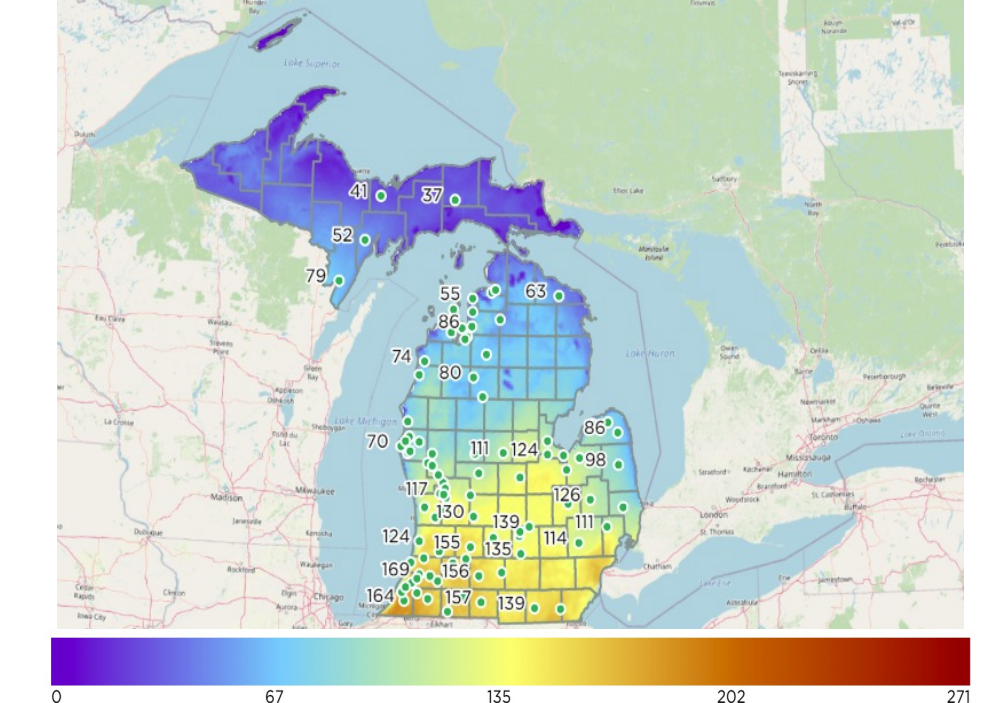
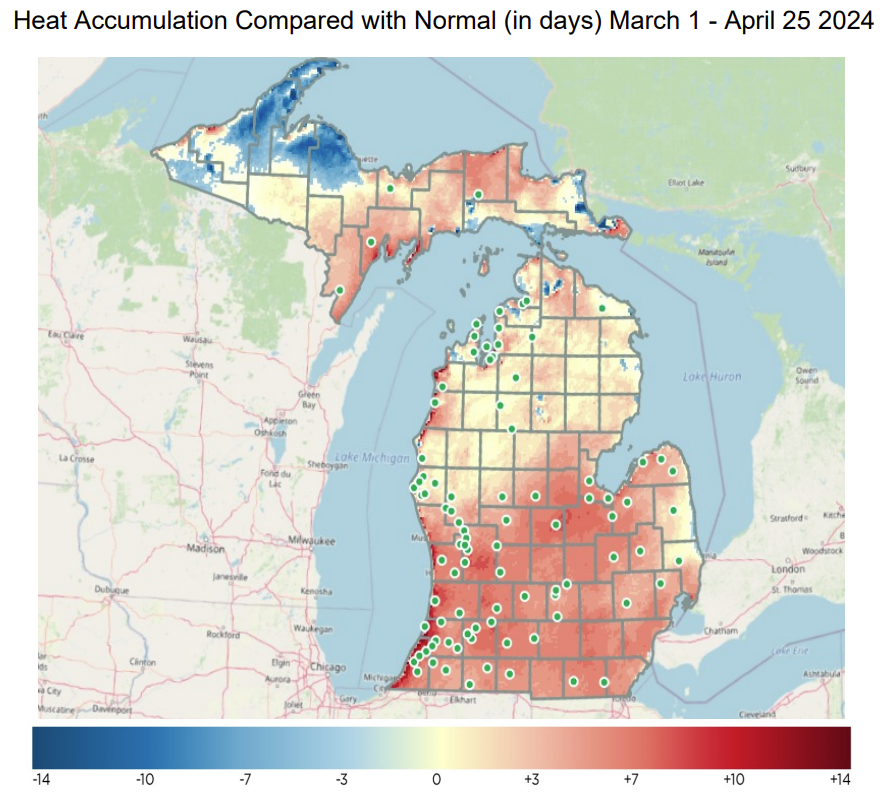
Warmer than normal temperatures are also predicted for the months of May and June. Precipitation has been variable across the state, with some regions in the Upper Peninsula already in a moderate to severe drought (Photo 3).
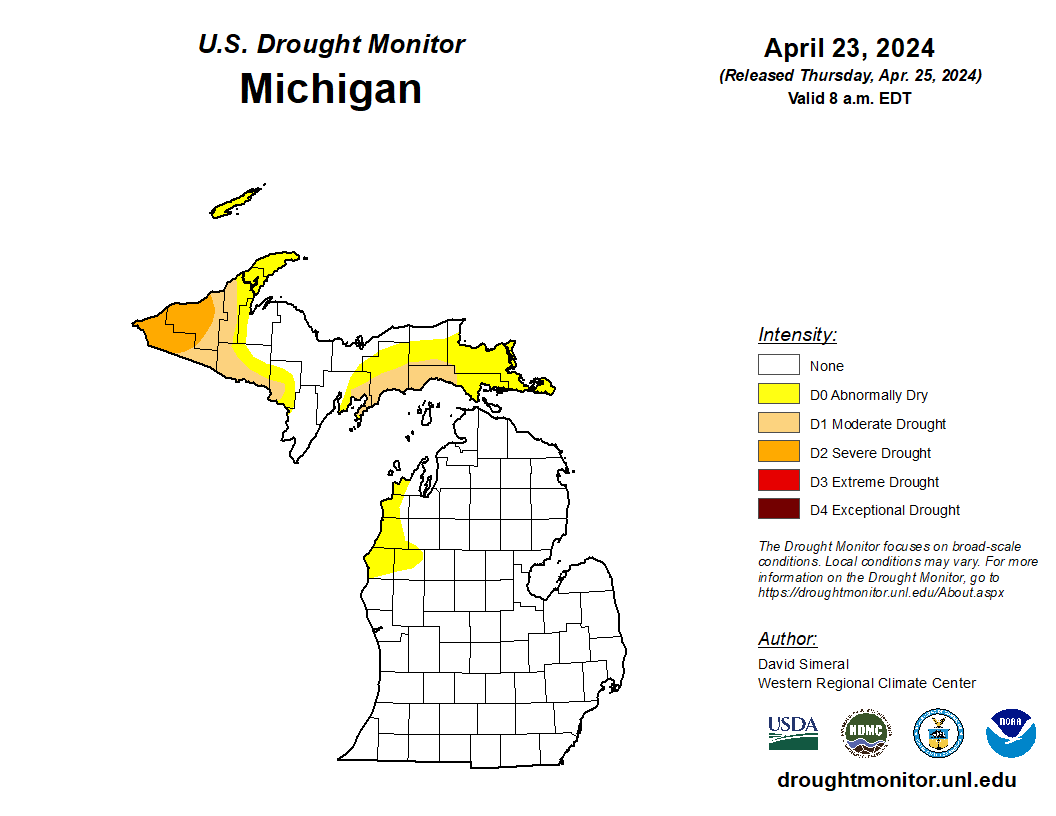
Crop update
Development will vary by tree species and farm location; however, some cone development and bud swelling has been observed (Photo 4). As new buds begin to swell, it is time to prepare for future fungicide applications on disease suspectable species (e.g., Douglas fir, Colorado blue spruce). For needlecast diseases, begin applying fungicides once a half-inch of new shoot growth has emerged. Repeated treatment application may be needed about four weeks later (follow product labels for minimum reapplication intervals). In general, treatment applications made a little early are better than later in preventing foliar diseases.
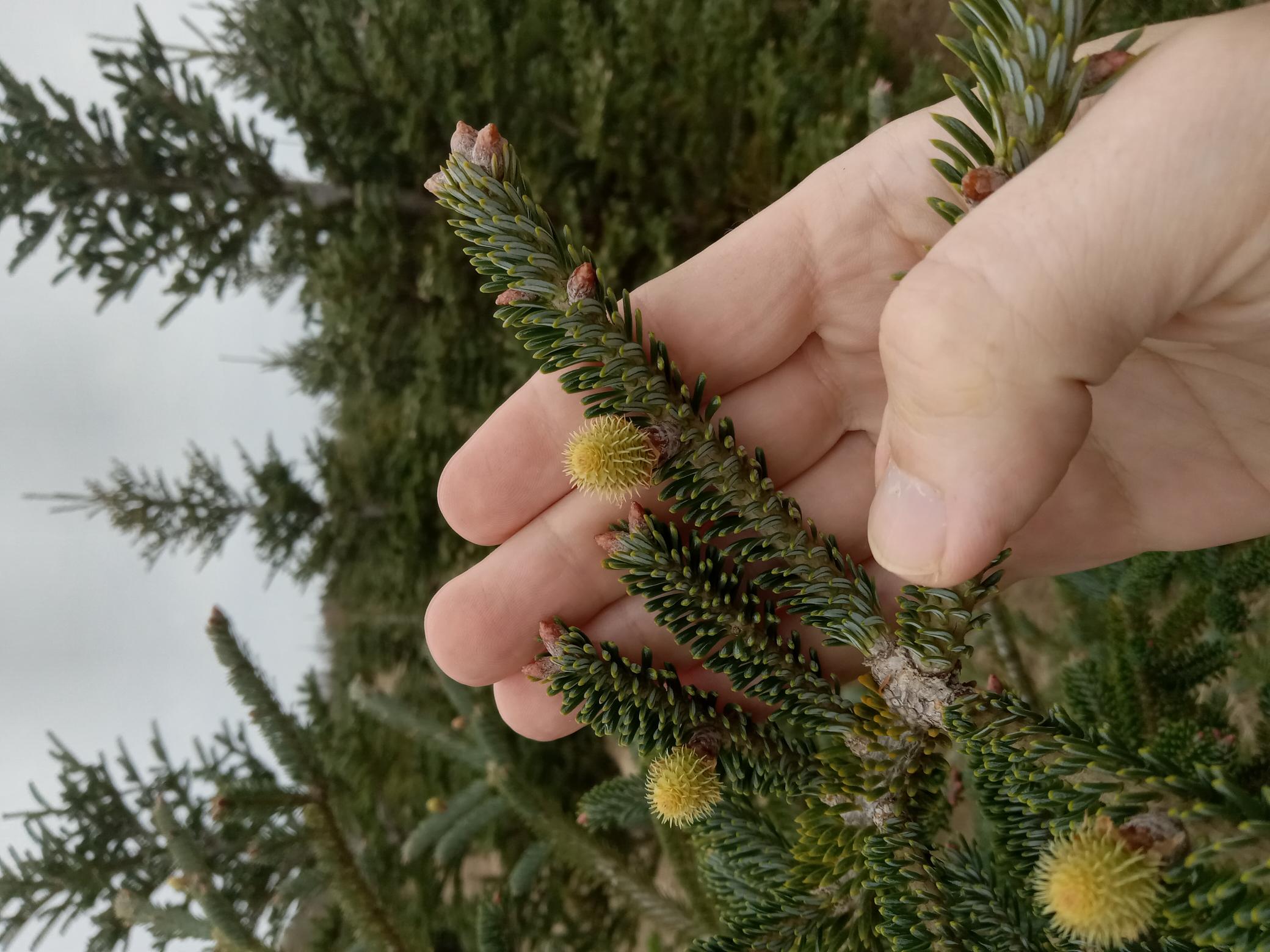
Early season pests
Monitor for a wide range of early season insect pests and consider treatment applications, if needed. Example pests include spruce gall adelgids, balsam twig aphid and white pine weevil (Photo 5). Review MSU’s Michigan Christmas Tree Pest Management Guide for what pests are of concern for each tree species.
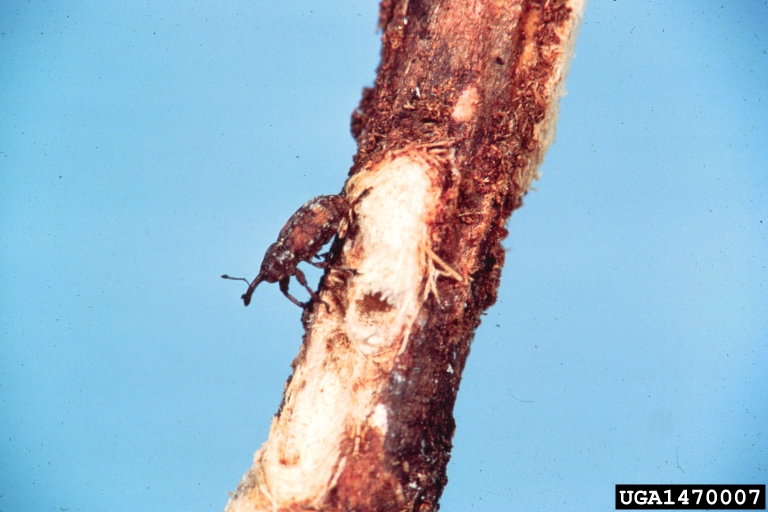



 Print
Print Email
Email

